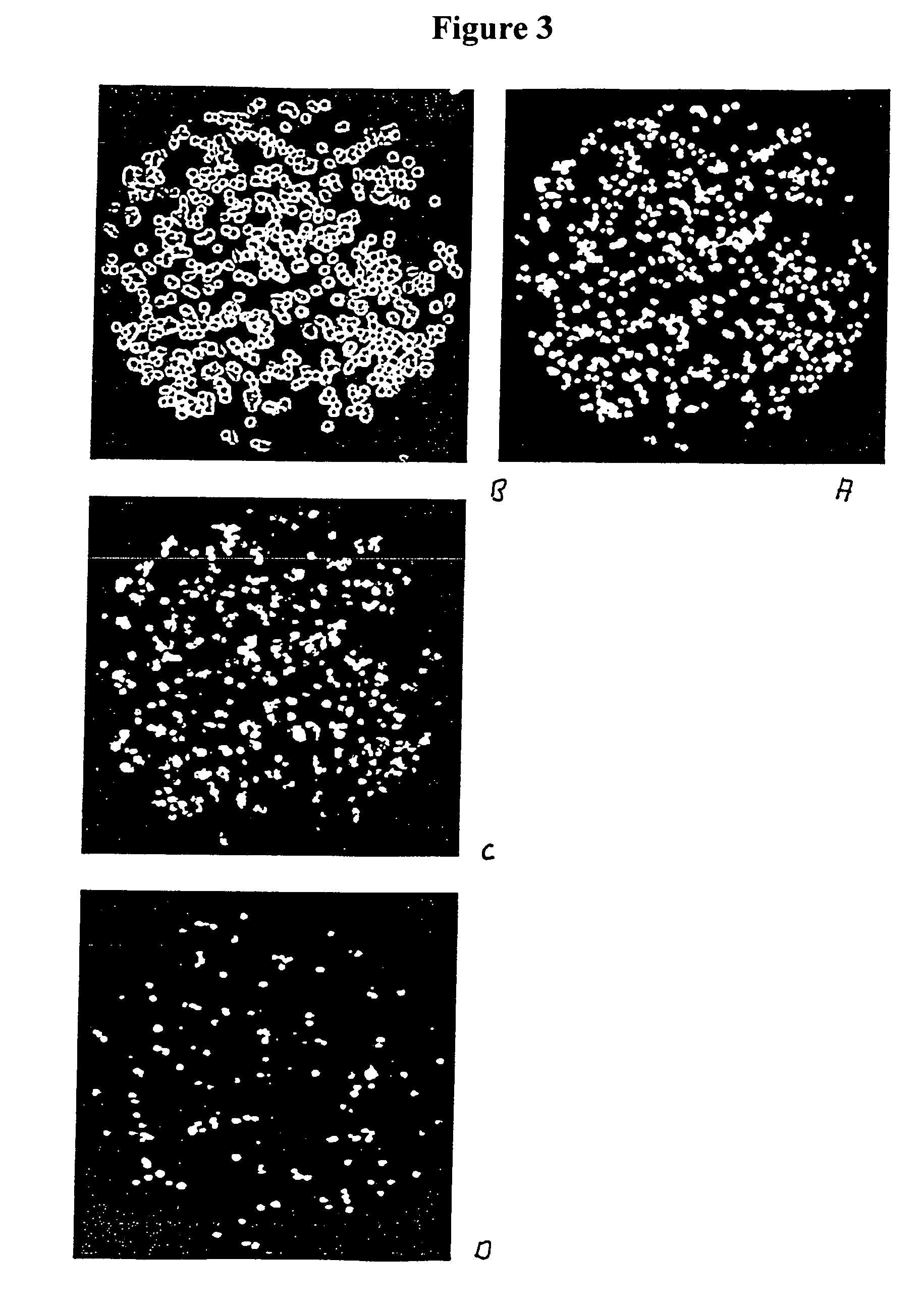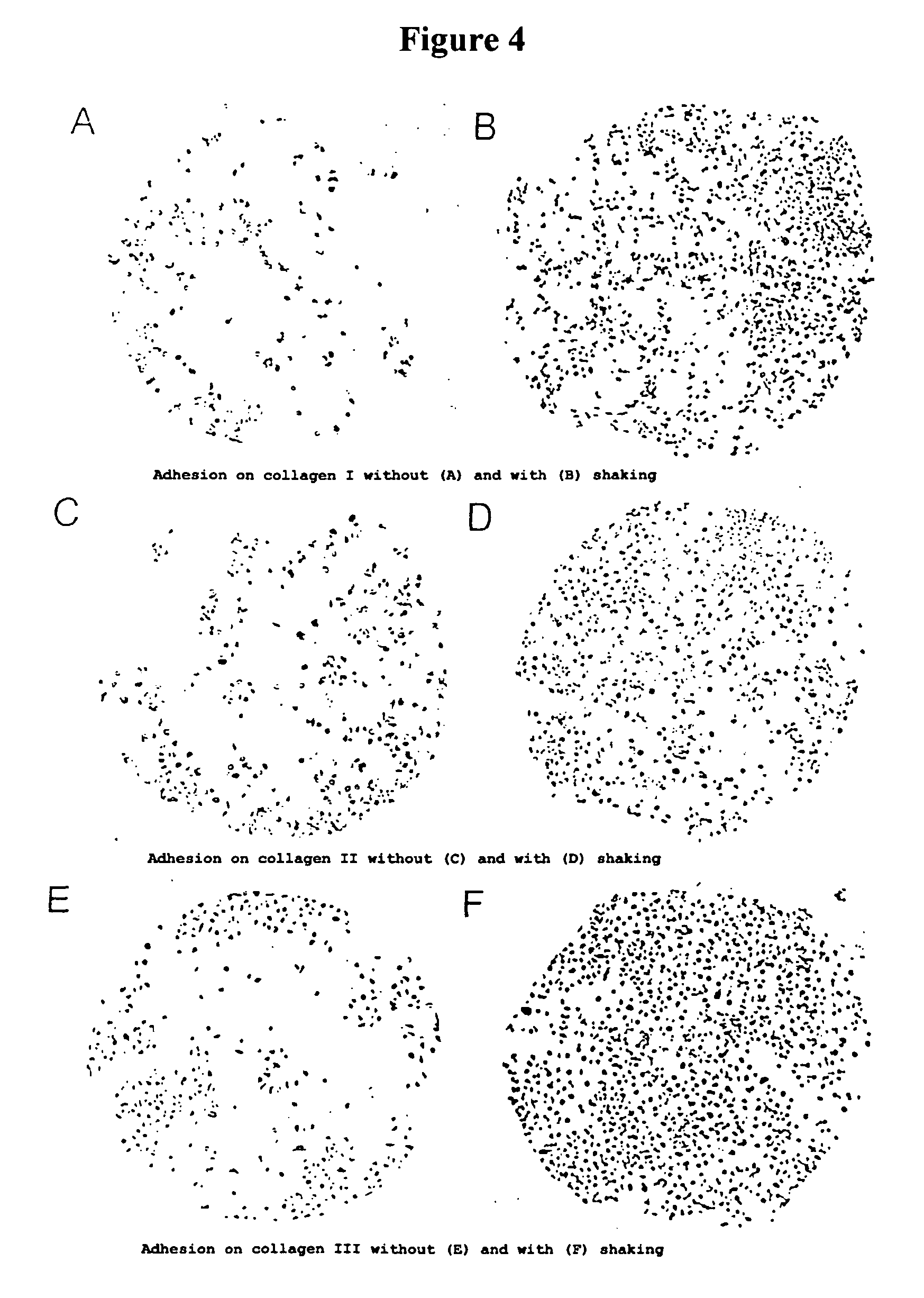Method and kit for performing functional tests on biological cells
a technology for biological cells and functional assays, applied in the field of methods, can solve the problems of insufficient reliability of measurement, low proportion of actually binding test cells, and inability to compare the results of measurement with one another in a sufficiently reliable manner
- Summary
- Abstract
- Description
- Claims
- Application Information
AI Technical Summary
Benefits of technology
Problems solved by technology
Method used
Image
Examples
example 1
Carrier Plate with an Array of Measuring Points
[0081] In FIG. 1, “10” indicates a rectangular carrier plate made from glass or plastic, on which some measuring areas 11 are arranged here by way of example in an array, to which areas biological cells—test cells hereinbelow—or reference particles, not shown in FIG. 1, can bind. Regions 12 of the carrier plate 10, to which test cells and reference particles cannot bind, are arranged between the measuring areas 11.
[0082] The measuring areas are 500 μm in diameter and the distance between their edges is 250 μm, resulting in their centers being 750 μm apart. In this way, 96 measuring areas 11 can be fitted on a carrier plate 10 having an edge length of 6 mm×9 mm.
[0083] As the diagrammatic side view of FIG. 2 shows, the carrier plate can be designed as the bottom plate of a cell culture vessel. On its section 17, the carrier plate 10 carries a functionalized surface 18 on which capture molecules 19, 21, 22 are immobilized in the measuri...
example 2
Incubating a Mixture of Test Cells and Reference Cells on an Array with Measuring Points Distributed Between Various Measuring Areas
[0089] For this experiment, test and reference cells are labeled with various membrane dyes.
[0090] Test cells used here are hu AO SMC and GLZ which are labeled using the Vibrant Dil Red Fluorescent Cell Linker Kit (V22885Y MoBiTec) according to the manufacturer's protocols.
[0091] The reference cells used are PC12 which are labeled using the Vibrant DiO Green Fluorescent Cell Linker Kit (V22886Y MoBiTec) according to the manufacturer's protocols.
[0092] To depict test and reference cells in an image, both cell types were stained blue with Vibrant Cell Labeling Solution DAPI.
[0093] The capture molecules immobilized in the measuring areas were various matrix proteins.
[0094] The test and reference cells were mixed in a 1:1 ratio, the mixture was applied to the carrier plate containing the array and the carrier plate was then incubated in an incubator a...
example 3
Incubation with and without Shaking
[0103] Test cells (PC 12) were incubated at a concentration of from 0.5 to 50×105 cells / ml on measuring areas of an area of 280 000 μm2 with various capture molecules, namely collagen I, collagen II and collagen III, for in each case 4 h, with, in one case, the carrier plates being shaken during incubation and, in the other case, being left resting. For shaking, the carrier plate was manually agitated at 10 min intervals, in order to mix the cell suspension on top of the arrays.
[0104]FIG. 4 depicts in the top row binding to collagen I, in the middle row binding to collagen II and in the bottom row binding to collagen III. On the left hand side, incubation without shaking is shown in each case at A, C and E and on the right hand side incubation with shaking is shown at B, D and E.
[0105] The images reveal that shaking results in a markedly increased and also markedly more uniform binding of the test cells to the capture molecules.
[0106]FIG. 5 dep...
PUM
| Property | Measurement | Unit |
|---|---|---|
| Adhesion strength | aaaaa | aaaaa |
| Ratio | aaaaa | aaaaa |
| Area | aaaaa | aaaaa |
Abstract
Description
Claims
Application Information
 Login to View More
Login to View More - R&D
- Intellectual Property
- Life Sciences
- Materials
- Tech Scout
- Unparalleled Data Quality
- Higher Quality Content
- 60% Fewer Hallucinations
Browse by: Latest US Patents, China's latest patents, Technical Efficacy Thesaurus, Application Domain, Technology Topic, Popular Technical Reports.
© 2025 PatSnap. All rights reserved.Legal|Privacy policy|Modern Slavery Act Transparency Statement|Sitemap|About US| Contact US: help@patsnap.com



